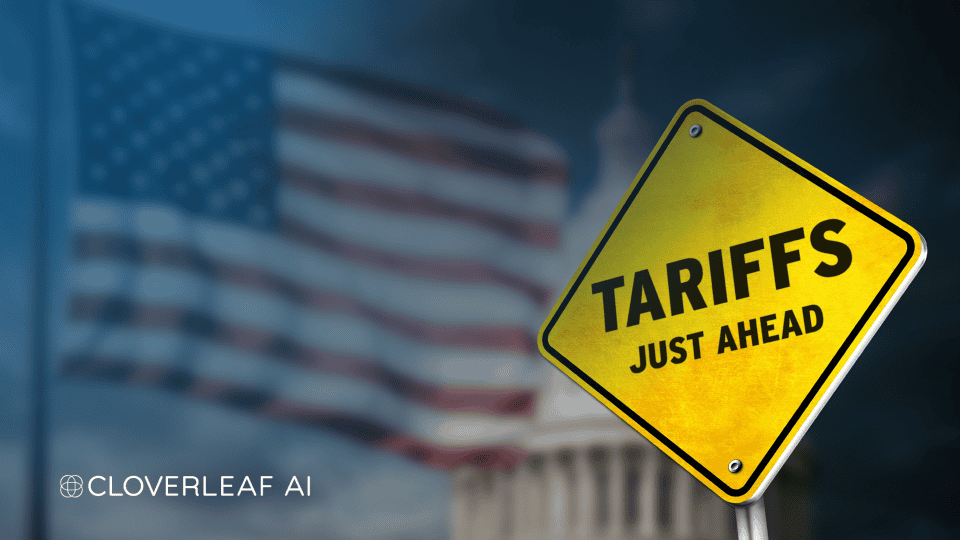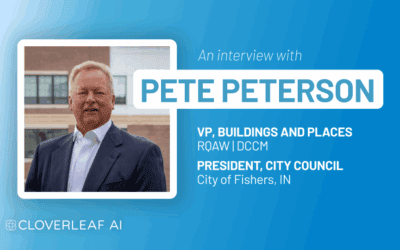By Jeremy Becker, Founder and CRO at Cloverleaf AI
Let’s get one thing straight: tariffs aren’t just some headline you scroll past in The Wall Street Journal. They’re not a distant macroeconomic policy issue that only hits Fortune 500 supply chains. If you’re selling into state and local government right now, tariffs are your problem, too.
Why? Because they’re quietly reshaping SLG budgets, procurement priorities, and project timelines across the country. I’ve seen too many vendors brush this off – “that’s above my pay grade,” or “it doesn’t really affect SaaS.” But here’s what local governments are actually saying in their committee meetings and budget sessions:
“We’re delaying affordable housing developments.”
“We’re cutting the gym from the new middle school.”
“We need to rework the whole capital plan.”
This isn’t theoretical. It’s happening in real time. Let’s talk about what that means for public sector sellers.
What’s Actually Happening on the Ground
We’ve been watching the public records roll in, and the story is the same from Seattle to Southington:
- King County, WA is prioritizing inflation adjustments just to hold existing housing contracts together. New developments? On hold.
- Pitkin County, CO is shrinking scopes and debating which features get cut from infrastructure projects.
- Abington Heights, PA is considering removing entire facilities from its school build just to stay within a budget blown up by steel and aluminum tariffs.
These aren’t just cost overruns—they’re confidence crushers. They’re making public sector leaders second-guess timelines, pause projects, and reevaluate who they partner with. And if you’re walking into that environment acting like the same procurement rules apply as last year, you’re going to lose deals to someone more plugged in.
Tariffs Touch Everything—Even If You Sell “Tech”
Think you’re safe because you sell software, not sheet metal? Think again.
If your product includes:
- Cameras for public safety
- Servers for digital infrastructure
- Network gear for connected cities
- Kiosks for DMV or 311 service centers…
…those components don’t exist in a vacuum. They’re caught in the same storm of tariffs, shipping delays, and raw material inflation that’s forcing cities to rewrite budgets every quarter. That’s why vendors need to stop thinking in silos. Public sector buyers don’t just want a slick solution—they need a partner who understands the constraints they’re under and shows up with answers.
What Smart Vendors Are Doing Right Now
If you’re in public sector sales and you’re not adjusting your playbook, you’re falling behind. Here’s what the best in the game are already doing:
- Forecasting with empathy: They’re not just pushing products—they’re starting conversations with, “How are these cost shifts affecting your capital plan?”
- Educating internally: Sales, ops, and customer success are aligned on how tariffs ripple into pricing, timelines, and procurement language.
- Prepping mitigation strategies: They’re offering contingency pricing, modular deployment plans, or alternative sourcing before buyers even ask.
This is about being proactive in a reactive world.
My Take
If you’re selling into SLG and still thinking about tariffs as “someone else’s problem,” it’s time to wake up.
Tariffs are tightening already-stretched budgets, derailing public trust in capital projects, and adding uncertainty to an already complex procurement cycle. That affects your pricing, your timing, and your ability to deliver. But here’s the upside: the vendors who understand these dynamics and lean in—who anticipate the squeeze and show up with a plan—they’re the ones earning long-term trust and contract renewals. Because here’s the truth: it’s not just about cost anymore—it’s about confidence. Local governments want to know who’s going to be there when things get messy. Who they can trust when plans shift. Who still picks up the phone six months into the engagement.
And that’s where we’re headed next. In Part 2 of this series, we’ll talk about why moments like this separate real partners from transactional vendors—and how public sector sellers can earn trust by showing up differently.
–







